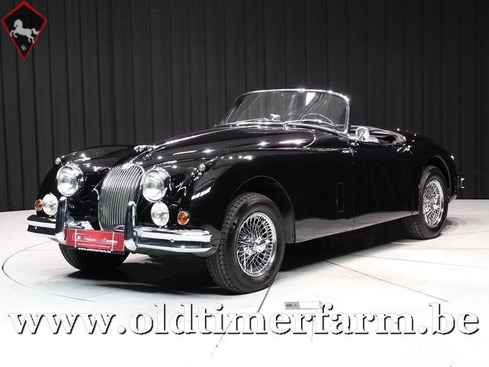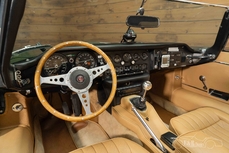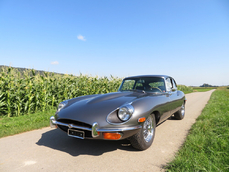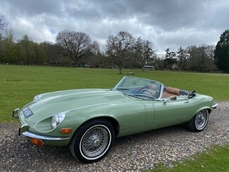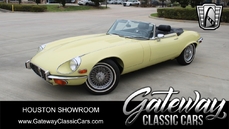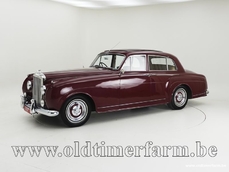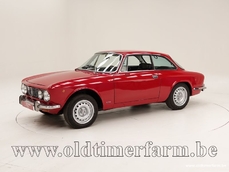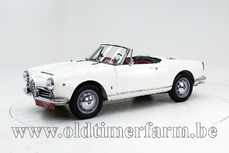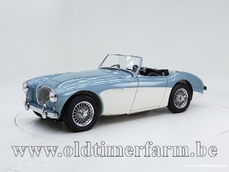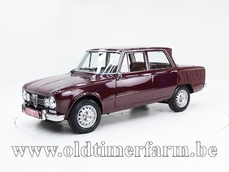Jaguar E-type 150 OTS '60 1960
General description :
Initially the XK 150 was available in Fixed Head Coupé (FHC) and Drophead Coupé (DHC) versions. The Roadster (XK150 OTS - Open Two-Seat) was launched in 1958. Minimal rear seats were fitted in the coupés. Although bearing a family resemblance to the XK120 and XK140, the XK150 was radically revised. A one-piece windscreen replaced the split screen, and the wing line no longer dropped so deeply at the doors. The widened bonnet opened down to the wings, and on the Roadster the bulkhead was moved back 4 inches (102 mm) to make the bonnet longer. The car was available at various times in Red, Pearl Grey, White, Indigo Blue, Claret, Cotswold Blue, Black, Mist Grey, Sherwood Green, Carmen Red, British Racing Green, Cornish Grey, and Imperial Maroon. The XK140's walnut dashboard was replaced by one trimmed in leather. On the early Drophead Coupés, the aluminium centre dash panel, which was discontinued after June 1958, had an X pattern engraving similar to the early 3.8 E-type. Thinner doors gave more interior space. On the front parking lights, which were located atop the wings (fenders), a little red light reminded the driver the lights were on. Suspension and chassis were very similar to the XK140, and steering was by rack and pinion; power steering was not offered. The standard engine, the same as fitted to the XK140, was the 3.4 litre DOHC Jaguar straight-6 rated at 180 SAE bhp at 5750 rpm but most cars were fitted with the SE engine whose modified cylinder head and larger exhaust valves boosted the power to 210 SAE bhp at 5500 rpm. Twin 1.75-inch (44 mm) SU HD6 carburettors were fitted. Production ended in October 1960, and totaled 2265 Roadsters, 4445 Fixed Head Coupés and 2672 Drophead Coupés Specifications. Bodywork Length – cm (in): 447 (176) Width –cm (in): 164 (64.6) Height – cm (in) : 136 (53.7) Wheelbase – cm (in) : 259 (102) Weight – kg (lb): 1430 (3156) Mechanics. Engine : straight-6 3442 cc (210 ci), front-mounted Valves : 12 Fuel system : 3 SU carburettors Gearbox : 4 speed + overdrive, manual Maximum power : 210 bhp at 5500 rpm Torque : 291 Nm at 3000 rpm. Maximum speed : 227 km/h (141 mph)
http://www.oldtimerfarm.be/en/collection-cars-for-sale/5282/jaguar-xk-150-ots-60.php
1960 Jaguar E-type 150 OTS '60 is listed sold on ClassicDigest in Aalter by Oldtimerfarm Dealer for €105950.
Car Facts
Car type : Car Make : Jaguar Model : E-type Model Version : 150 OTS '60 Engine size : 0.0 Model Year : 1960 Location : Aalter
Sold
Seller Information
Sold
People who viewed this Jaguar E-type also viewed similar Jaguar listed at ClassicDigest
Other cars listed for sale by this dealer
About Jaguar E-type
The Jaguar E-Type FHC (Fixed Head Coupe) is a classic sports car that was produced by the British automaker Jaguar Cars from 1961 to 1974. It is often regarded as one of the most beautiful cars ever produced, with its long, sleek hood, flowing curves, and aggressive stance.The E-Type FHC was derived from the D-Type race car that won the 24 Hours of Le Mans in 1955, 1956, and 1957. It was powered by a 3.8-liter inline-six engine that produced up to 265 horsepower and featured advanced suspension and braking systems, with independent suspension and disc brakes on all four wheels.
The E-Type FHC was known for its exceptional handling and performance, with a top speed of up to 150 mph and acceleration from 0 to 60 mph in as little as 6.7 seconds. Its design was also innovative for its time, featuring an independent rear suspension and a monocoque construction.
The Jaguar E-Type FHC became an iconic car of the 1960s and was favored by celebrities and enthusiasts alike. OTS i.e The Jaguar E-Type Roadster became an iconic car of the 1960s and was favored by celebrities wanting to be seen in their car.
